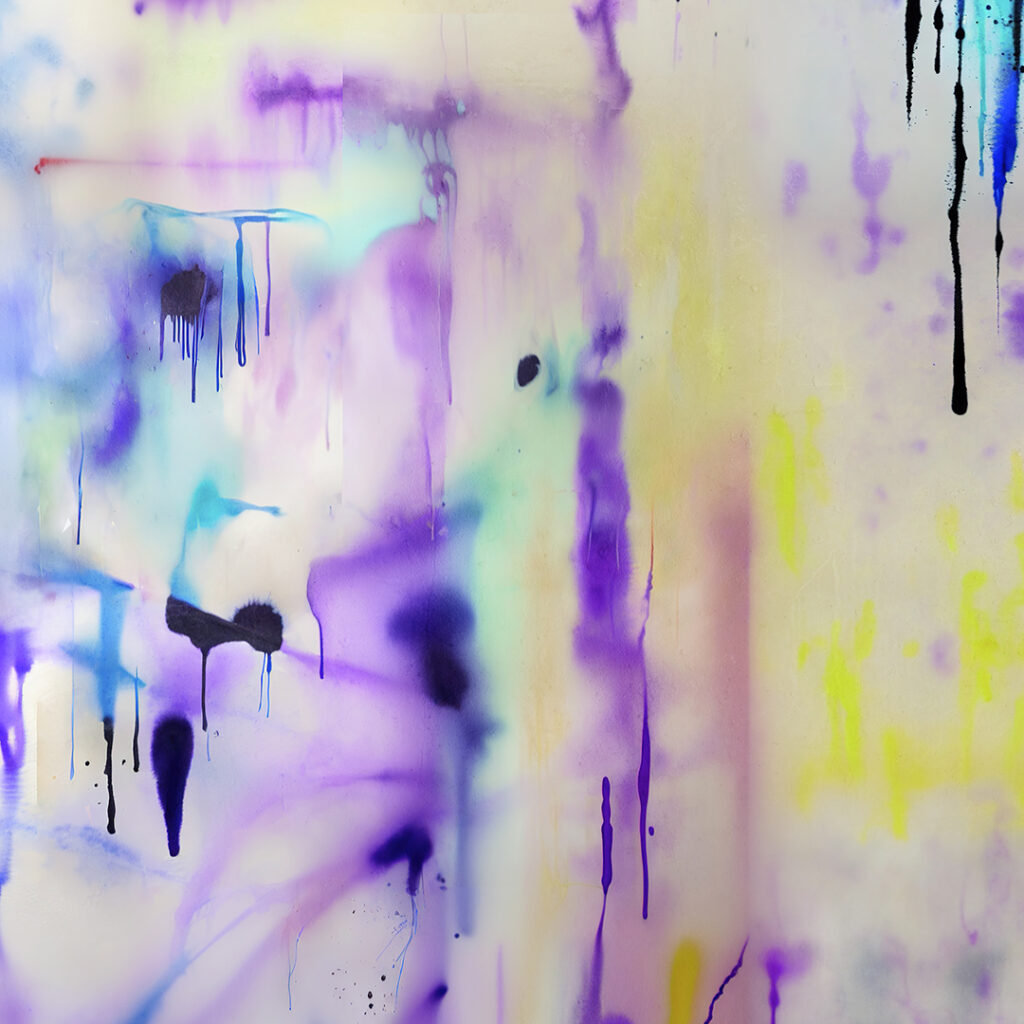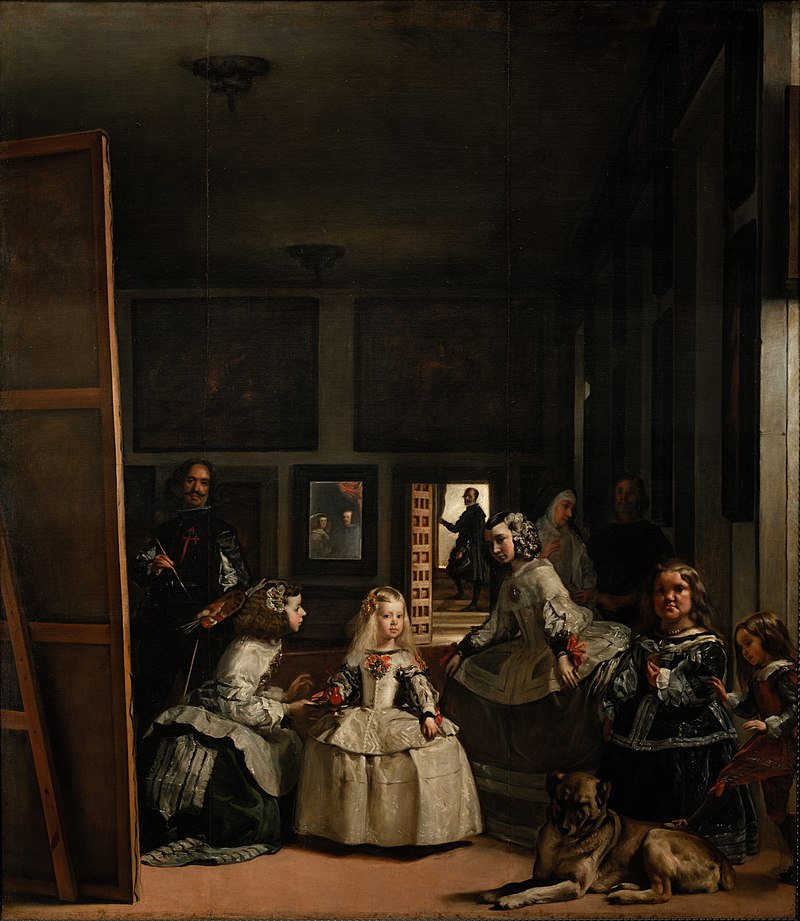Outpainting : comment sortir de la peinture

Unique NFT accompanied with a print on request
Extension by an IA of a plastic sheet used to protect the walls of my workshop from painting.
Two functions have appeared with the CLIP technology (D2, MJ, SD): outpainting and inpainting. One might be tempted to take these two words literally and analyze them as ways of getting out of and into painting.
What is it about technologically? Outpainting allows one to extend an image beyond its edges by continuing it according to its own style and coherence, while inpainting allows one to erase a part of the image to replace it. The relationship between these two functions allows us to imagine a centripetal and centrifugal movement which, like a changing spiral, goes from the inside to the outside, and from the outside to the inside.
Couldn’t this be seen as a stimulating proposal to rethink the pictorial image? AI of course affects first of all the photographic image and the question of the indexical contract that reigned during the last century. But other images are in the latent space, paintings, and the ability of neural networks to process them in a probabilistic way allows us to envisage and continue a painting or to modify it.
Thus, this sempiternal question of the end of painting, illusion of a surpassing, could be restated as the fact of going out of painting, not to eliminate it and go towards a beyond, but to continue it. “Coming out of painting” would have another meaning than a negation, but would consist in an endless pursuit, giving AI an unexpected role in the history of painting.
This is perhaps one of the avenues of reflection that opens up with the project The Machines Studio, of which the first NFT and the first print have been acquired by the Musée Granet in Aix-en-Provence. By pursuing an involuntary painting, consisting of a plastic sheet initially intended to protect a wall of my studio, each fragment constitutes an exit from the limits of this painting at the same time as a continuation, an extension, a completion of this one, involving it in a movement of unlimited since new fragments will be able to appear in the course of time.
Outpainting, this extensive exit from painting, raises the traditional question of the artist’s studio. Indeed, this space is not only a place of work where one executes what one has planned. It is also a mental and reflexive space that allows one to put one’s production at a distance, to look at it as if from the outside. The artist is on hold when he suspends his activity to review his images. He contextualizes them, no longer isolates them but connects them to a space to perceive them. The outpainting allows to realize on new foundations this setting at distance halfway between the material thing and the mental thing.

Deux fonctions ont fait leur apparition avec la technologie CLIP (D2, MJ, SD) : l’outpainting et l’inpainting. On serait tenté de prendre ces deux mots au pied de la lettre et de les analyser comme des manières de sortir de la peinture et d’y entrer.
De quoi s’agit-il technologiquement ? L’outpainting permet d’étendre une image au-delà de ses bords en la poursuivant suivant son style et sa cohérence propre, tandis que l’inpainting permet d’effacer une partie de l’image pour remplacer celle-ci. La relation entre ces deux fonctions permet d’imaginer un mouvement centripète et centrifuge qui, à la manière d’une spirale changeante, va de l’intérieur vers l’extérieur, et de l’extérieur vers l’intérieur.
Ne pourrait-on pas y voir une proposition stimulante pour repenser l’image picturale ? L’IA affecte bien sûr en premier lieu l’image photographique et la question du contrat indiciel qui a régné pendant le siècle dernier. Mais d’autres images sont dans l’espace latent, des peintures, et la capacité des réseaux de neurones à les traiter de manière probabiliste permet d’envisager et de poursuivre une peinture ou de la modifier.
Ainsi, cette sempiternelle question de la fin de la peinture, illusion d’un dépassement, pourrait être reposée comme le fait de sortir de la peinture, non pas pour l’éliminer et aller vers un au-delà, mais pour la poursuivre. « Sortir de la peinture » aurait un tout autre sens donc qu’une négation, mais consisterait en une interminable poursuite, accordant à l’IA un rôle inattendu dans l’histoire de la peinture.
C’est peut-être l’une des pistes de réflexion qui s’ouvre avec le projet L’atelier des machines, dont le premier NFT et la première impression ont été acquis par le Musée Granet d’Aix-en-Provence. En poursuivant une peinture involontaire, consistant en une bâche plastique initialement destinée à protéger un mur de mon atelier, chaque fragment constitue une sortie des limites de cette peinture en même temps qu’une poursuite, une extension, une complétion de celle-ci, l’entraînant dans un mouvement d’illimitation puisque de nouveaux fragments pourront apparaître au cours du temps.
L’outpainting, cette sortie extensive de la peinture, repose la traditionnelle question de l’atelier de l’artiste. En effet, cet espace n’est pas seulement un lieu de travail où on exécute ce qu’on a prévu. C’est aussi un espace mental et réflexif qui permet de mettre à distance sa production, de la regarder comme du dehors. L’artiste est en attente lorsqu’il suspend son activité pour revoir ses images. Il les contextualise, ne les isole plus mais les relie à un espace pour les percevoir. L’outpainting permet de réaliser sur de nouveaux fondements cette mise à distance à mi-chemin entre la chose matérielle et la chose mentale.
Exfaits avec Outpainting
Completion : instauration avec Inpainting
